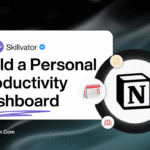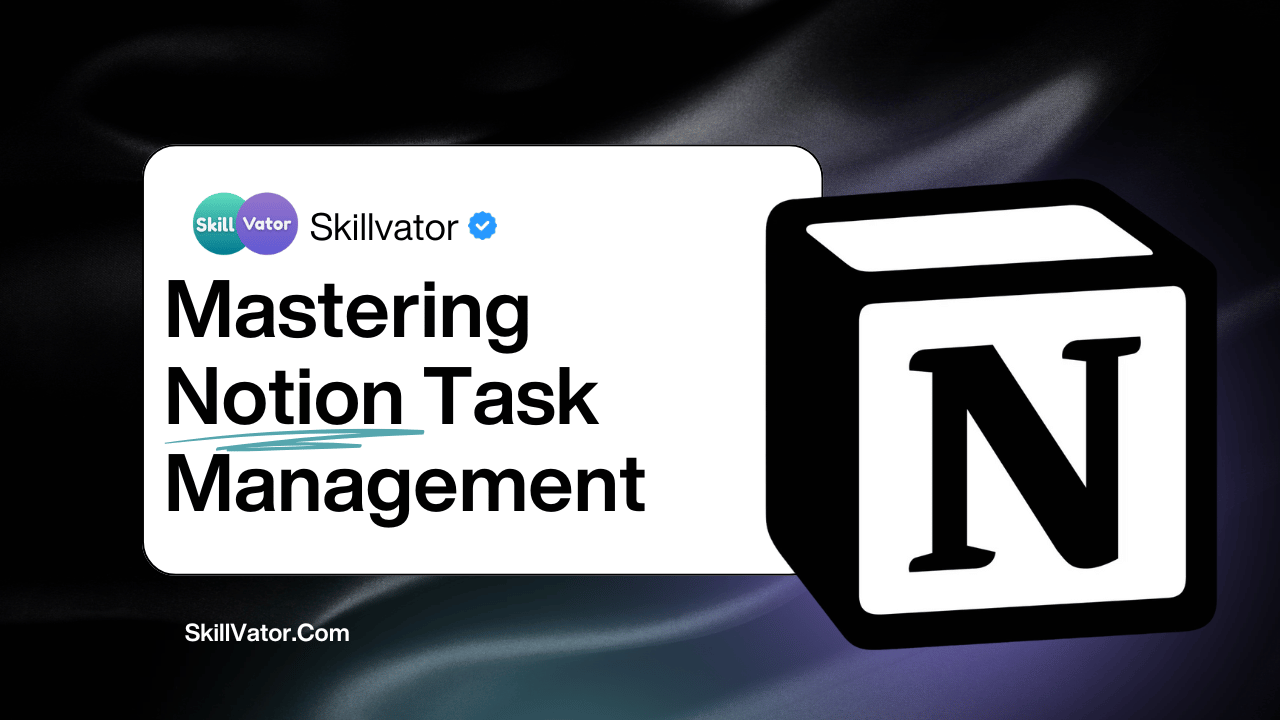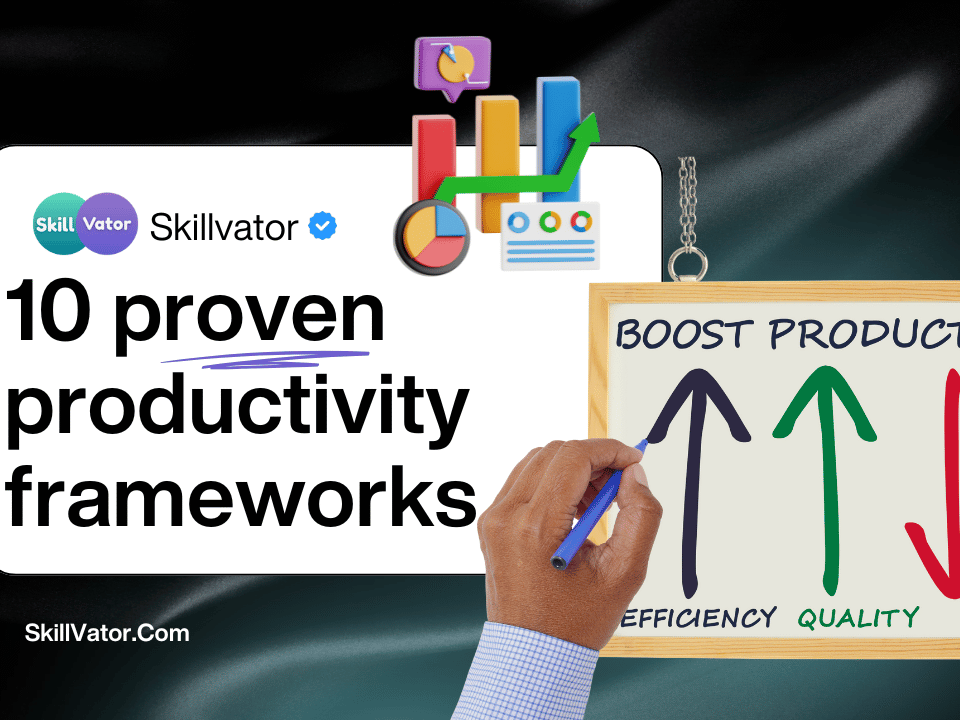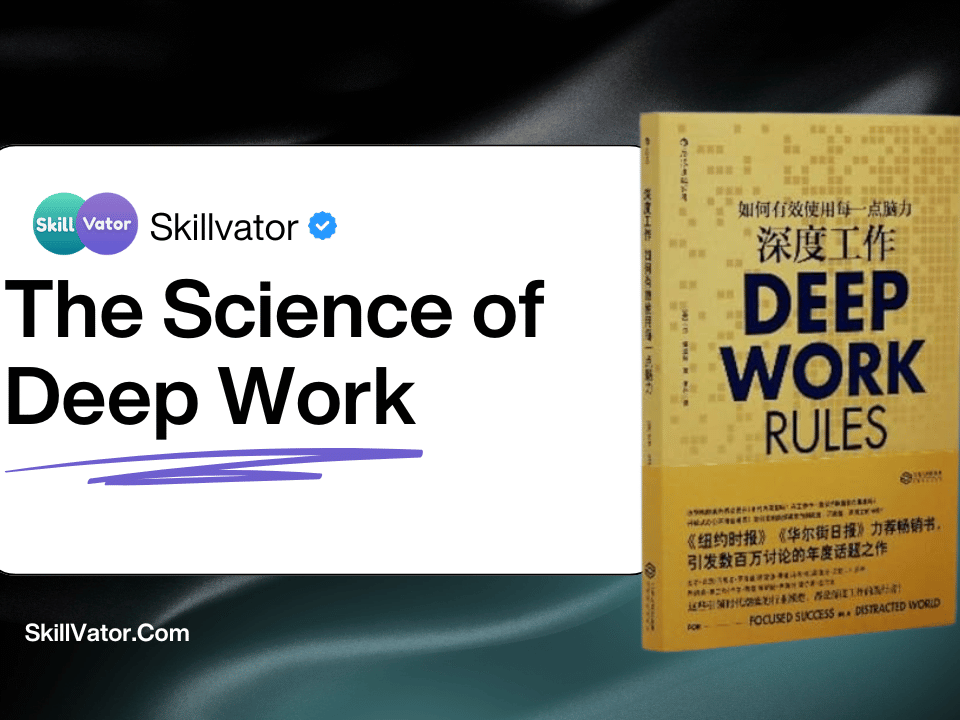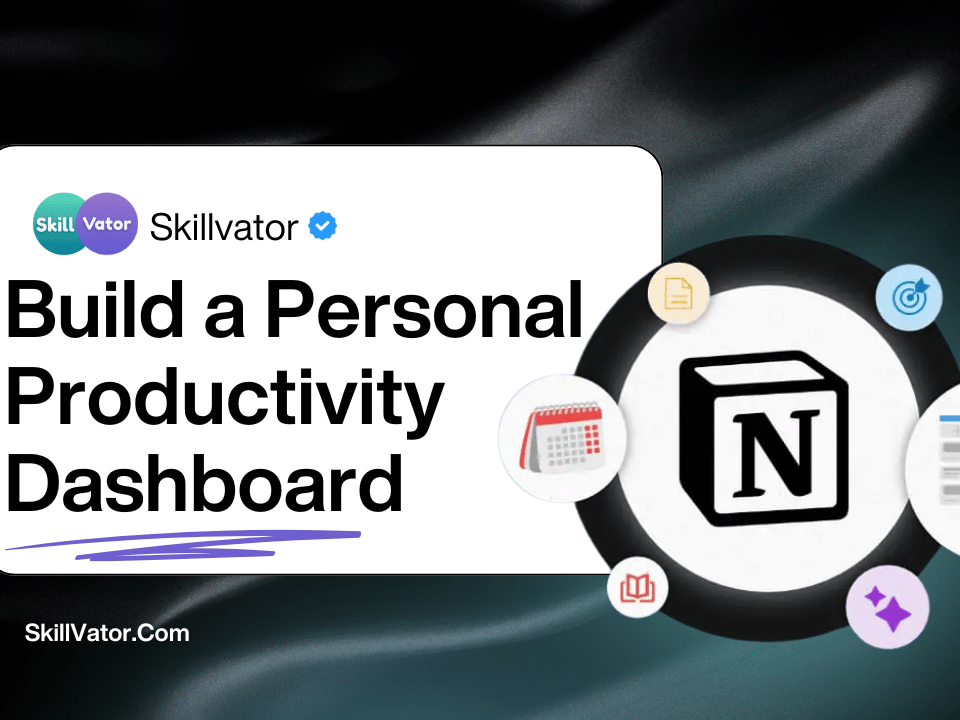Let’s face it — managing tasks today feels harder than ever.
Between emails, meetings, projects, and side hustles, it’s easy to lose track of what truly matters. You might’ve tried apps like Todoist, Asana, or Trello — but they all fall short when it comes to customization.
That’s where Notion comes in.
At Skillvator, we see Notion as more than just a productivity app. It’s your digital workspace, your task manager, and your personal assistant, all rolled into one.
In this Skillvator guide, we’ll walk you through how to create a Notion Task Management System that organizes your day, reduces mental clutter, and boosts focus — so you can do meaningful work and grow faster.
What Makes Notion Perfect for Task Management? Mastering Notion Task Management
Unlike traditional to-do apps, Notion lets you build your task manager from scratch — tailored to your goals, work style, and mindset.
Here’s why Skillvator recommends Notion as the ultimate productivity tool:
| Feature | Why It Matters |
|---|---|
| Fully Customizable | You decide how your system looks and functions — from minimalist lists to advanced workflows. |
| All-in-One Workspace | Manage tasks, projects, notes, goals, and habits all in one place. |
| Database Power | Create relationships between tasks, projects, and goals for total visibility. |
| Flexible Views | Switch between Table, Kanban, Calendar, and Timeline views effortlessly. |
| Automation Potential | Integrate with Google Calendar, Zapier, or other tools for smart workflows. |
In short: Notion adapts to you, not the other way around.
Want to bring clarity, focus, and structure to your daily workflow?
In this Skillvator deep-dive guide, you’ll learn exactly how to design your own Notion Productivity Dashboard — complete with 13 actionable steps to organize your tasks, goals, projects, and habits all in one place.
👉 Read the full guide here:
How to Build a Personal Productivity Dashboard in Notion (Step-by-Step Guide + 13 Steps)
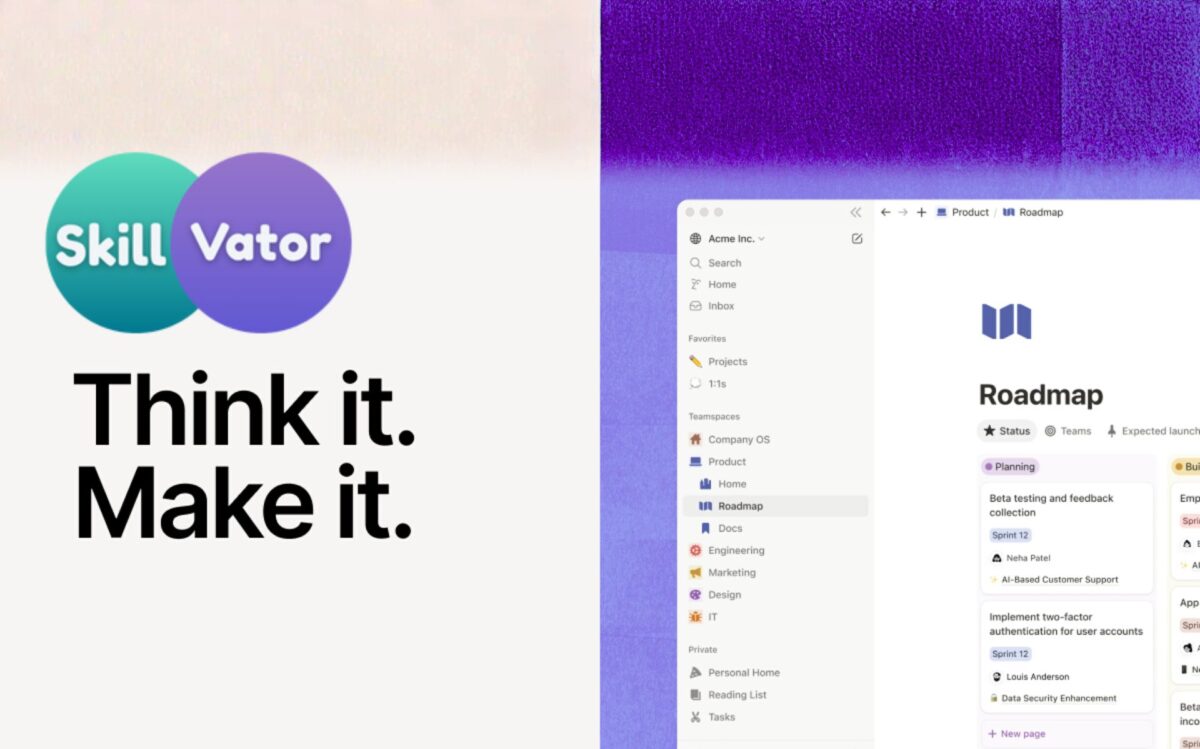
The Skillvator Framework for Notion Task Management
At Skillvator, we believe in structure with flexibility — systems that grow with you.
Our framework divides task management into three interconnected levels:
| Level | Focus | Examples |
|---|---|---|
| Daily Execution | What you need to do today | To-dos, meetings, priorities |
| Weekly Planning | What you’re focusing on this week | Projects, milestones, routines |
| Big-Picture Goals | Why you’re doing it | Long-term growth and direction |
Let’s build your Notion setup around these levels.
Step 1: Create Your Task Database
Start with your core database — the engine that powers your system.
-
Create a new page → name it “🗂️ Task Manager.”
-
Add a Table View database.
-
Add these essential columns:
| Property | Type | Purpose |
|---|---|---|
| Task Name | Title | The task itself |
| Status | Select | To Do / In Progress / Done |
| Priority | Select | Low / Medium / High |
| Due Date | Date | Deadlines |
| Category | Select | Work / Personal / Learning / Health |
| Project | Relation | Connect to your project database |
| Notes | Text | Quick details or subtasks |
Skillvator Tip:
Use icons or colors for categories to make scanning faster and more visual.
Step 2: Create Custom Views
Now that your database exists, it’s time to make it usable.
🔹 Daily Tasks View
Filter:
-
Status → “To Do”
-
Due Date → “Is Today”
This view helps you focus on today’s priorities without distractions.
🔹 Weekly Overview View
Filter:
-
Due Date → “This Week”
-
Sort → By Priority → Descending
This gives you a 7-day snapshot of what’s due and important.
🔹 Completed Tasks View
Filter:
-
Status → “Done”
You’ll love watching this view grow — a visual record of your progress and effort.
Skillvator Tip:
Keep your main dashboard clean by using linked databases. For example, create separate pages for “Daily Tasks” and “Weekly Planning,” and embed filtered views from your main Task Manager.
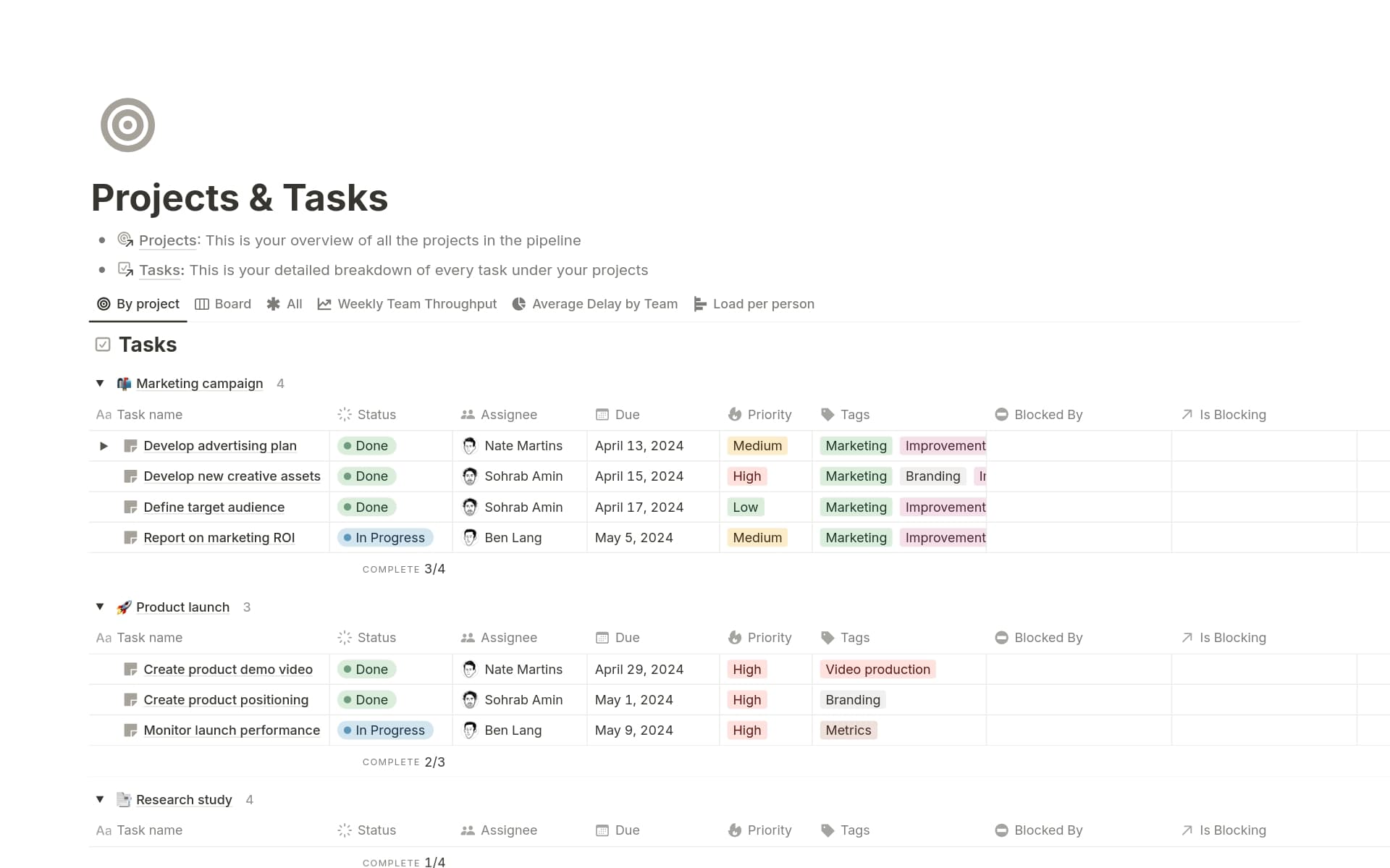
Step 3: Connect Tasks with Projects
Tasks without context are noise.
That’s why Skillvator always recommends linking your tasks to projects.
-
Create a new database called “🚀 Projects.”
-
Add properties:
-
Project Name
-
Status
-
Start / End Date
-
Goal Relation
-
-
Go back to your Task Manager and create a Relation Property linking to “Projects.”
Now, every task can belong to a project, and every project can show all its related tasks.
Skillvator Insight:
This creates a “two-way view” — open a project, and you instantly see every task connected to it. That’s real control.
Step 4: Add Priority and Energy Filters
Productivity isn’t just about time — it’s also about energy.
Add a new property in your Task Manager:
-
Energy Level (Select): Low / Medium / High
Now, create filtered views like:
-
Low Energy Tasks: Things you can do when you’re tired (email replies, admin work)
-
High Energy Tasks: Deep work that needs full focus (writing, strategy, design)
Skillvator Tip:
Plan your day by energy, not just time.
Doing high-energy tasks during your peak hours can double your productivity.
Step 5: Create a Task Inbox
In the real world, new tasks appear randomly — during meetings, while reading, or in the shower.
Create a page called “📥 Task Inbox.”
It’s a quick-capture space where you can dump tasks without worrying about structure. Later, you can move them into your main Task Manager and categorize them.
At Skillvator, we call this the “Mental Offload Zone.”
It clears your head instantly and keeps creativity flowing.

Notion Task Management
Step 6: Add Reminders and Notifications
Notion allows you to set reminders using @remind.
In your “Due Date” field, you can add reminders like:
-
@remind(today 9am) -
@remind(1 day before)
You’ll get notifications inside Notion or via email — keeping you on track without constant checking.
Skillvator Pro Move:
Combine Notion reminders with Google Calendar sync (via Zapier or Notion API) for automated time-blocking.
Step 7: Visualize Tasks with Kanban Boards
Kanban boards are powerful for visual thinkers.
Create a Board View in your Task Manager:
-
Group by → Status
Now, you can drag tasks between “To Do,” “In Progress,” and “Done” — giving you a satisfying visual flow.
Optionally, create additional views:
-
By Category → See tasks grouped by type (Work, Personal, Learning)
-
By Project → See everything tied to each project
Step 8: Integrate with Your Weekly Planner
Here’s where your Notion task management system becomes truly Skillvator-grade.
Create a Weekly Planner Page:
-
Add headings for each day of the week.
-
Embed your “Daily Tasks” view under each day.
-
Add a “Weekly Goals” section at the top (linked to your Goals database).
This structure lets you see your whole week at once — tasks, goals, and focus points all in one screen.

Mastering Notion Task Management weekly plan
Skillvator Insight:
Planning is the bridge between vision and execution.
Your Weekly Planner keeps that bridge strong.
Step 9: Add a Progress Tracker
Tracking progress keeps motivation high.
Add a Formula Property in your Task Manager:
Then, in your Projects database, create a Rollup that sums this formula — showing how many tasks are completed per project.
You’ll now see visual progress percentages for every project.
Step 10: Automate with Templates
Save time by creating Notion templates for recurring task types.
Examples:
-
“Content Creation Task” (with properties for title, due date, tags)
-
“Client Work Task” (with status, feedback, and delivery dates)
-
“Learning Task” (with course link and next lesson)
Click “New → Template” in your Task Manager to create reusable task templates.
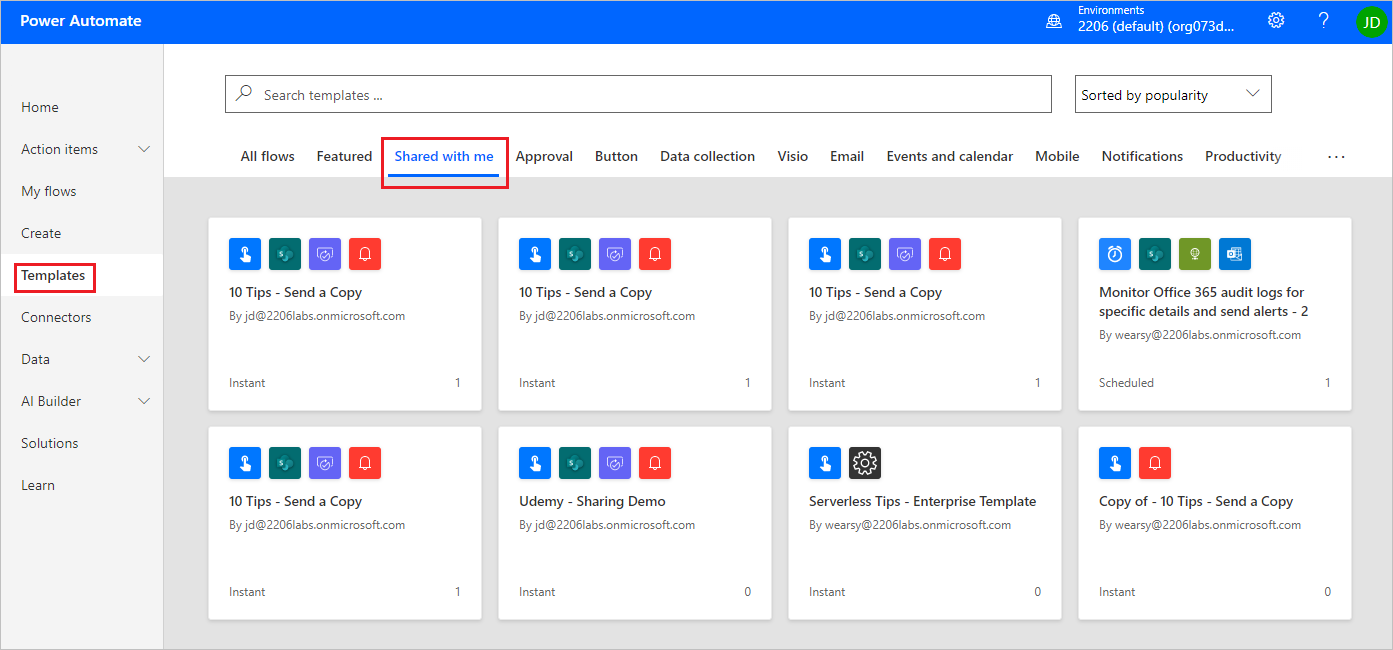
Mastering Notion Task Management
Skillvator Tip:
Automation isn’t about being lazy — it’s about removing friction from creativity.
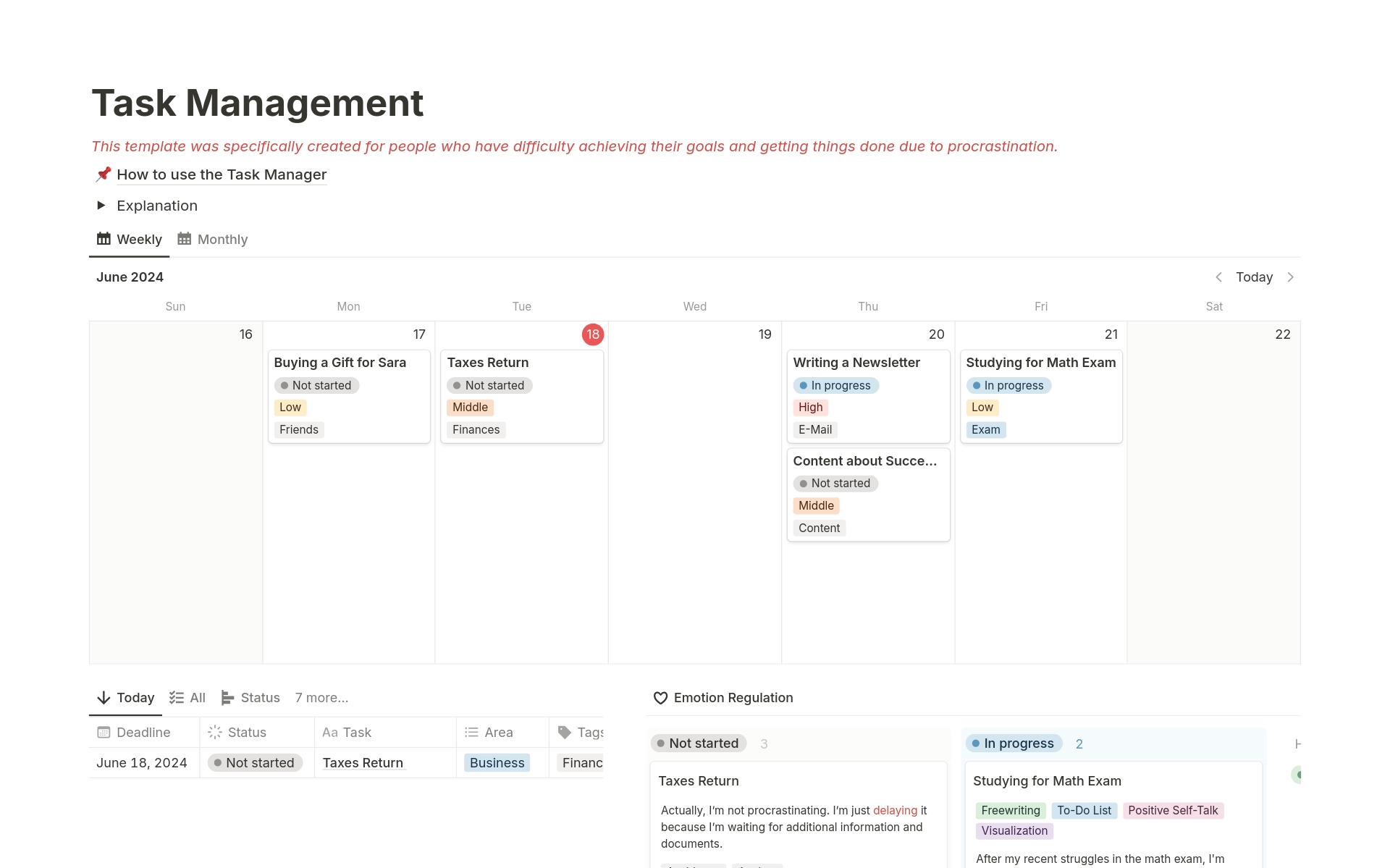
Step 11: Review and Reflect
Your Notion task manager should evolve as you do.
Schedule a Weekly Review Session every Friday:
-
Check completed tasks.
-
Move pending ones forward.
-
Adjust priorities for next week.
-
Reflect on what worked and what didn’t.
At Skillvator, we call this the Growth Reflection — it transforms your task manager into a self-improvement tool.
Ask yourself:
-
Did I spend time on what truly matters?
-
Which tasks drained my energy?
-
What should I delegate or automate next week?
Step 12: Optional Add-Ons for Advanced Users
Once your system is running smoothly, you can level it up with these Skillvator-approved add-ons:
| Add-On | Description |
|---|---|
| Habit Tracker | Add a table to track routines like exercise, journaling, or study. |
| Goal Dashboard | Connect tasks to long-term OKRs or annual goals. |
| Time Tracker | Use formulas or integrations to measure time spent on each task. |
| Tag System | Label tasks by context (#Email, #Design, #Calls). |
| Archive System | Store completed tasks by month for easy performance reviews. |
These enhancements make Notion not just a task manager — but a personal productivity ecosystem.
The Skillvator Philosophy: Systems That Scale with You
At Skillvator, we believe productivity systems should empower you — not overwhelm you.
A good Notion task manager should:
-
Support your workflow, not dictate it.
-
Evolve as your career and life grow.
-
Reflect your personality, energy, and ambitions.

Mastering Notion Task Management
When done right, it’s more than a list — it’s your command center for growth.
You’ll feel lighter, clearer, and more in control of your day — because every action connects to your bigger purpose.
When you manage your tasks with intention:
-
You’ll work smarter, not harder.
-
You’ll focus on growth, not just busyness.
-
You’ll turn chaos into clarity — and ideas into results.
So, open Notion today, start with a blank page, and build your Skillvator-inspired task system — a system that truly elevates your workflow.

